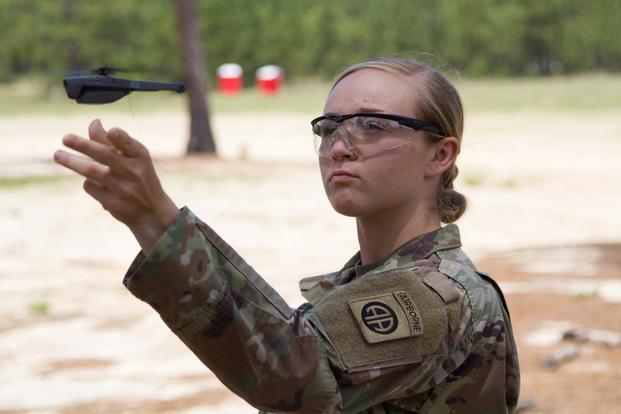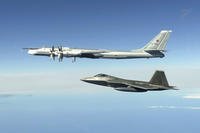Equipment officials recently fielded the Army's first pocket-sized drones to units of the 82nd Airborne Division, part of an effort to eventually equip every squad in the service with this type of capability.
"It is the start of an era where every squad will have vision beyond their line of sight," Nathan Heslink, assistant program manager for Soldier Borne Sensors at Program Executive Office Soldier, said in a recent PEO Soldier news release. "The squad will not have any dead space within its area of operations, and this allows soldiers to detect threats earlier than ever, meaning it is more likely soldiers won't be harmed during their missions."
The fielding follows a $39.6 million contract the Army awarded in February to FLIR Systems Inc. to support small-unit reconnaissance efforts.
PEO Soldier officials fielded the tiny unmanned aerial systems to 3rd Brigade Combat Team at Fort Bragg, North Carolina, from April 29 to May 3.
Soldiers received training on the system and flew the drone through various scenarios through the week, the release states.
Units were issued a ground control system, composed of a base station with hand controller and display unit, and two air vehicles for day and night operations, the release states, adding that the drones are small, highly maneuverable airborne sensors that are very quiet and difficult to spot.
"This system is something new that not a lot of soldiers have touched or even seen before, so it's cool to test it out and push it to its limits before we take it with us on our deployment," Sgt. Dalton Kruse, one of the operators being trained on the system, said in the release. "Most of us have never flown a drone before, but this training gave us the confidence and knowledge to use the system, making us more comfortable to use it while deployed. It was easy to pick up and fly, very user-friendly, and I can already tell that this system will benefit my unit downrange."
John Paul Kruszewski, lead engineer for unmanned systems at the U.S. Army Combat Capabilities Development Command Soldier Center, compared the system to a flying pair of binoculars.
"Using this system, soldiers can understand their operational environment better, so they can make better decisions and make these decisions quicker than ever," Kruszewski said in the release. "It makes soldiers more effective while reducing their tactical risk."
Related Video:
-- Matthew Cox can be reached at matthew.cox@military.com.












